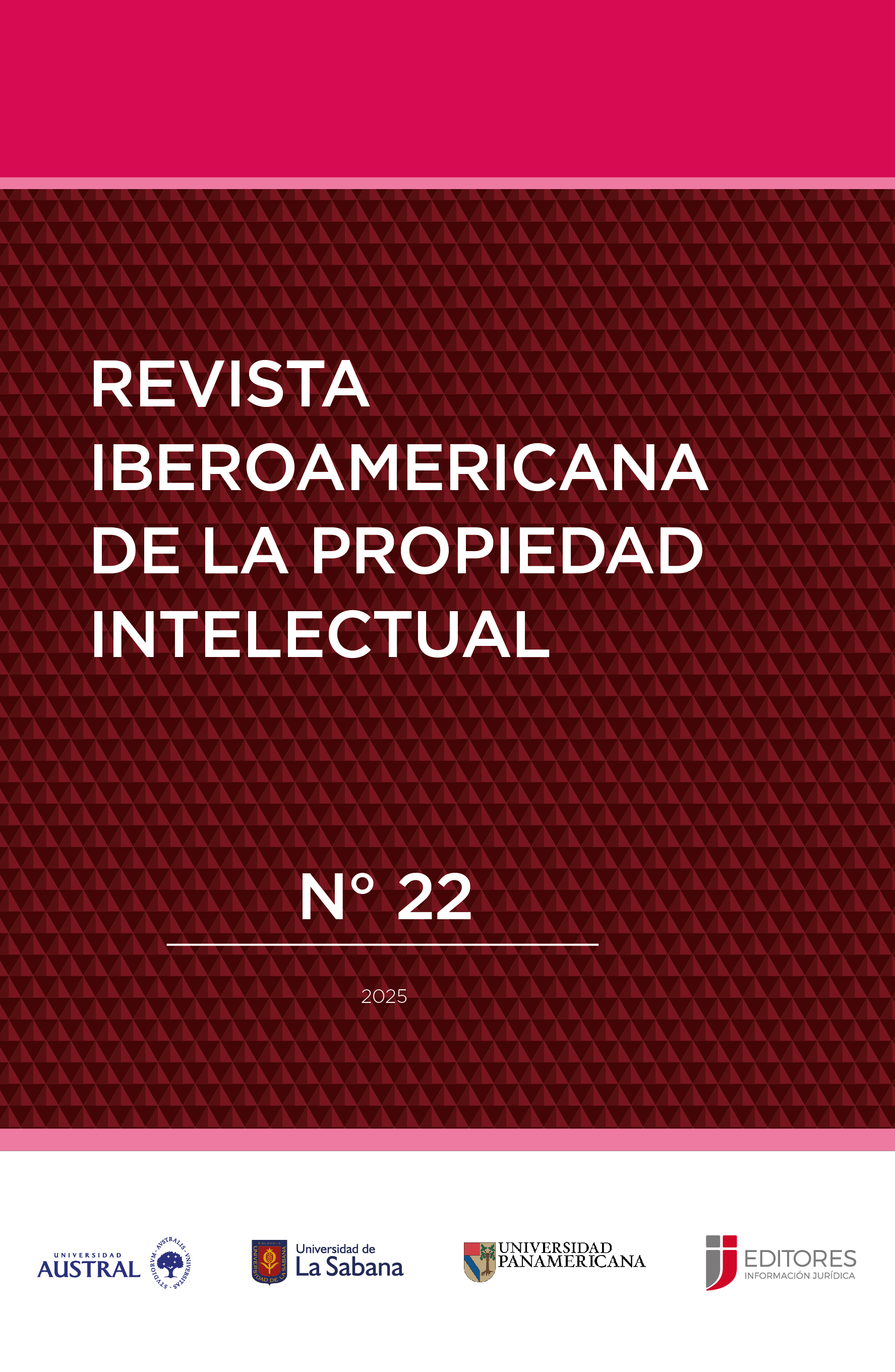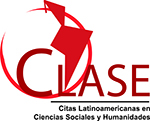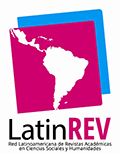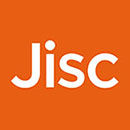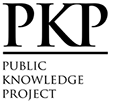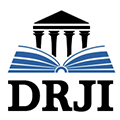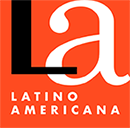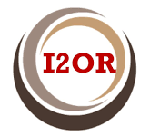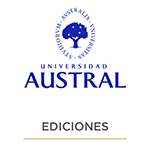Compulsory Licensing of Pharmaceuticals in the Andean Community: Critical Analysis of the Regulatory Framework and Proposal for Objective Criteria
DOI:
https://doi.org/10.26422/RIPI.2025.2200.alcKeywords:
compulsory licenses, patents, pharmaceutical patent, research and developmentAbstract
This paper analyzes systematic deficiencies in the Andean regulatory framework for pharmaceutical compulsory licenses, identifying the need for objective criteria and standardized procedures. Through comparative legal-dogmatic analysis and multiple case studies, including the paradigmatic Opinion 004-2024 on Dolutegravir in Colombia, four structural problems are identified: subjective evaluation criteria, absence of rigorous analysis of alternatives, procedures lacking transparency, and insufficient assessment of innovation impact. The research develops an original theoretical framework based on specific proportionality tests and proposes quantifiable criteria to balance access to medicines with pharmaceutical innovation incentives. It concludes that the current system allows arbitrary decisions that compromise legal certainty, proposing comprehensive reform that includes objective public interest indicators, transparent procedures, and periodic review mechanisms.
Downloads
References
Abbott, F. M. y Reichman, J. H. (2007). The Doha Round's public health legacy: Strategies for the production and diffusion of patented medicines under the amended TRIPS provisions. Journal of International Economic Law, 10(4), 921-987.
Abreu & Asociados. (9 de mayo de 2020). Instructivo para concesión de licencias obligatorias sobre patentes de medicamentos. ¡Se presentan los primeros trámites! https://www.abreuip.com/es/instructivo-para-concesion-de-licencias-obligatorias-sobre-patentes-de-medicamentos-se-presentan-los-primeros-tramites/
Acemoglu, D. y Linn, J. (2004). Market size in innovation: Theory and evidence from the pharmaceutical industry. The Quarterly Journal of Economics, 119(3), 1049-1090.
Agência Nacional de Vigilância Sanitária. (2018). Anuário estatístico do mercado farmacêutico. Brasília: Agência Nacional de Vigilância Sanitária. https://antigo.anvisa.gov.br/resultado-de-busca?x=0&y=0&_3_keywords=anuario+estadistico&_3_formDate=1441824476958&p_p_id=3&p_p_lifecycle=0&p_p_state=normal&p_p_mode=view&_3_groupId=0&_3_struts_action=%2Fsearch%2Fsearch&_3_cur=1&_3_format=
Alves, J. (2012). Compulsory licensing in the context of India's March 2012 Nexavar decision. Legal Issues in Globalization Research Paper, HNRS 302-001.
Ámbito Jurídico (14 de septiembre de 2020). Decisión 486 del 2000: veinte años y sigue tan campante. Análisis de la evolución normativa andina. Ámbito Jurídico. Legis. https://www.ambitojuridico.com/noticias/especiales/mercantil-propiedad-intelectual-y-arbitraje/decision-486-del-2000-veinte-anos-y
Beall, R. y Kuhn, R. (2012). Trends in compulsory licensing of pharmaceuticals since the Doha Declaration: A database analysis. PLOS Medicine, 9(1), e1001154. https://doi.org/10.1371/journal.pmed.1001154
Becker, G. (2002). La naturaleza de la competencia. Themis – Revista de Derecho, 44, 55-61.
Budish, E., Roin, B. N. y Williams, H. (2016). Patents and research investments: Assessing the empirical evidence. American Economic Review, 106(5), 183-187.
Chaves, G. C., Oliveira, M. A., Hasenclever, L. y Meiners, C. (2007). A evolução do sistema de propriedade intelectual no Brasil: Contexto histórico e perspectivas. Cadernos de Saúde Pública, 23(2), 257-267.
Contreras, J. L., Lakshané, R. y Lewis, P. M. (2018). Patent working requirements and complex products. Journal of Intellectual Property and Entertainment Law, 7(1).
Dam, K. (1995). Intellectual property in an age of software and biotechnology. John M. Olin Law & Economics Working Paper, University of Chicago Law School, 35, 1-26.
Denicolò, V. y Zanchettin, P. (2022). Patent protection for complex technologies. International Journal of Industrial Organization, 81(C).
Dore, M. H. I., Kushner, J. y Masse, I. (1993). The optimal length of a patent with variable output elasticity and returns to scale in R&D. Atlantic Economic Journal, 16(4), 51-61. https://doi.org/10.1007/BF02299772
Figueiredo, R. C. (2021). Brazilian Senate approves bill on the compulsory licensing of COVID-19 vaccines' patents. Kluwer Patent Blog. https://patentblog.kluweriplaw.com/2021/05/12/brazilian-senate-approves-bill-on-the-compulsory-licensing-of-covid-19-vaccines-patents/
Ford, N., Wilson, D., Chaves, G. C., Lotrowska, M. y Kijtiwatchakul, K. (2007). Sustaining access to antiretroviral therapy in the less-developed world: Lessons from Brazil and Thailand. AIDS, 21(Suppl 4), S21-S29.
Fundación Misión Salud. (13 de agosto de 2015). Licencia obligatoria para imatinib: el caso de Colombia. Misión Salud. https://www.mision-salud.org/actualidad/licencia-obligatoria-de-imatinib-el-caso-de-colombia/?lang=es
Fundación Misión Salud. (17 de agosto de 2023). Dolutegravir, licencias obligatorias e implicaciones en el acceso. Misión Salud. https://www.mision-salud.org/2023/08/dolutegravir-licencias-obligatorias-e-implicaciones-en-el-acceso/
Gallini, N. T. (1992). Patent policy and costly imitation. RAND Journal of Economics, 23(1), 52-63.
Gant, B. (2021). Patents are not probabilities: Refuting the probabilistic patent theory. Chicago-Kent Journal of Intellectual Property, 20, 299-330.
García Pérez, F. J. y Mesalles Garau, G. (2023, 28 de abril). Reforma de la normativa farmacéutica de la Unión Europea. Uría Menéndez. https://www.uria.com/es/publicaciones/8398-reforma-de-la-normativa-farmaceutica-de-la-union-europea
Gilbert, R. y Shapiro, C. (1990). Optimal patent length and breadth. RAND Journal of Economics, 21(1), 106-112.
Gurgula, O. y Hull, J. (2021). Compulsory licensing of trade secrets: Ensuring access to COVID-19 vaccines via involuntary technology transfer. Journal of Intellectual Property Law & Practice, 16(11), 1242-1261.
Hall, B. H. y Helmers, C. (2024). The economics of innovation and intellectual property. Oxford University Press.
IAM Media. (2025). Characteristics of pharmaceutical patent royalty rates. Intellectual Asset Management. https://www.iam-media.com/characteristics-pharmaceutical-patent-royalty-rates
Iannello, P. A. (2013). Algunos fundamentos ético normativos sobre las patentes de invención en temas de medicinas esenciales. En Schötz, G. J. (Coord.), Patentes y Medicinas Esenciales. La armonización entre el derecho a la salud y la propiedad intelectual (1ª ed., pp. 51-71). Heliasta.
Instituto Ecuatoriano de Propiedad Intelectual. (2020). Ecuador tiene 22 licencias obligatorias en marcha. IEPI - Servicios. https://www.derechosintelectuales.gob.ec/ecuador-tiene-22-licencias-obligatorias-en-marcha/
Instituto Nacional de Defensa de la Competencia y de la Protección de la Propiedad Intelectual. (19 de septiembre de 2019). Lineamientos al procedimiento que se sigue para la emisión de licencias obligatorias (Resolución N° 2706-2019/DIN-INDECOPI). https://www.indecopi.gob.pe/-/lineamientos-para-autorizar-la-explotacion-comercial-de-una-patente
Klemperer, P. (1990). How broad should the scope of patent protection be? RAND Journal of Economics, 21(1), 113-130.
Knowledge@Wharton. (19 de abril de 2012). Sparring over sorafenib: How will Natco's move against Bayer affect pharma licensing? University of Pennsylvania. https://knowledge.wharton.upenn.edu/article/sparring-over-sorafenib-how-will-natcos-move-against-bayer-affect-pharma-licensing/
Kremer, M. (1998). Patent buyouts: A mechanism for encouraging innovation. The Quarterly Journal of Economics, 113(4), 1137-1167.
Kremer, M. y Glennerster, R. (2004). Strong medicine: Creating incentives for pharmaceutical research on neglected diseases. Princeton University Press.
Kunisawa, V. Y. M. (2015). The TRIPS agreement implementation in Brazil: Patents in the pharmaceutical area. Nomos Verlagsgesellschaft.
Lemley, M. A. y Shapiro, C. (2005). Probabilistic patents. Journal of Economic Perspectives, 19(2), 75-98.
Make Medicines Affordable. (5 de diciembre de 2024). The campaign for use of compulsory licensing in Thailand. Make Medicines Affordable. https://makemedicinesaffordable.org/the-campaign-for-use-of-compulsory-licensing-in-thailand/
McKenzie, R. (2009-2010). In defense of monopoly. Regulation, 16-19.
Medicamentalia. (2015). Compulsory license: A sovereign act to bypass a patent. Access to Medicines Investigation.
Merchor, B. (2016). El interés público como causal para el otorgamiento de una licencia obligatoria de patente. Advocatus, 34, 25-33.
Minsalud. (2010). Boletín de prensa No 324 de 2010. https://www.minsalud.gov.co/Paginas/ColombiacumpleconindicadorespositivosenlaluchacontraelVIHSida.aspx
MSF Access Campaign. (2012). Background information on India's first compulsory licence. Médecins Sans Frontières.
Nordhaus, W. D. (1969). Invention, Growth, and Welfare: A Theoretical Treatment of Technological Change. MIT Press.
Ooms, G. y Hanefeld, J. (2019). Threat of compulsory licenses could increase access to essential medicines. BMJ, (365), l2098. https://www.bmj.com/content/bmj/365/bmj.l2098.full.pdf
Organización Mundial de la Salud. (9 de abril de 2024). Hepatitis C. WHO Fact Sheets. https://www.who.int/es/news-room/fact-sheets/detail/hepatitis-c
Qunaj, L., Kaltenboeck, A. y Bach, P. (2022). Compulsory licensing of pharmaceuticals in high‐income countries: A comparative analysis. Milbank Quarterly, 100(1), 284-313.
Reichman, J. H. (2009). Compulsory licensing of patented pharmaceutical inventions: Evaluating the options. Journal of Law, Medicine & Ethics, 37(2), 247-263.
Rodrigues, W. C. V. y Soler, O. (2009). Licença compulsória do efavirenz no Brasil em 2007: contextualização. Revista Panamericana de Salud Pública, 26(6), 553-559. https://www.scielosp.org/pdf/rpsp/v26n6/12.pdf
Rozansky, F. (1996). Nueva legislación argentina de patentes de invención. Derechos Intelectuales, 7, 124-148.
Rowe, E. A. (2012). When the government wants trade secrets: Presenting a shield-or-disclose framework. Seyfarth Shaw Trading Secrets Blog.
Sánchez Caro, J. (2022). Licencias obligatorias: ¿remedio para hacer frente a los precios elevados y abusivos de los medicamentos? Revista Derecho y Salud, 12. https://accesojustomedicamento.org/licencias-obligatorias-remedio-para-hacer-frente-a-los-precios-elevados-y-abusivos-de-los-medicamentos/
Sánchez Caro, J. (2023). Unión Europea (UE) y licencias obligatorias: un tímido e insuficiente avance. Revista de la Asociación Acceso Justo al Medicamento, 24. https://accesojustomedicamento.org/union-europea-ue-y-licencias-obligatorias-un-timido-e-insuficiente-avance/
Saxell, T., Takalo, T. y Izhak, O. (25 de agosto de 2020). Optimal patent policy for pharmaceuticals: Balancing innovation and access to new drugs. VoxEU. https://cepr.org/voxeu/columns/optimal-patent-policy-pharmaceuticals-balancing-innovation-and-access-new-drugs
Schötz, G. J. y Rapela, M. (2020). Covid-19, Derechos de Propiedad Intelectual y Licencias Obligatorias. Revista Jurídica La Ley, 2020-C.
Sebastian, T. y Sebastian, N. (2024). Local working of pharmaceutical patents in India: An empirical exploration into its determinants. Queen Mary Journal of Intellectual Property, 14(4), 374-404
Secretaría General de la Comunidad Andina. (31 de octubre de 2024). Dictamen Nº 004-2024. Gaceta Oficial del Acuerdo de Cartagena, XLI(5572). https://www.comunidadandina.org/DocOficialesFiles/Gacetas/GACETA%205572.pdf
Superintendencia de Industria y Comercio. (2021). El régimen de licencias obligatorias en la decisión 486 de 2000. Ruta PI
Unión Andina. (2020, 31 de julio). Lineamientos aplicables al procedimiento para la emisión de licencias obligatorias en materia de patentes en Perú. Unión Andina. https://unionandina.com/es/lineamientos-aplicables-al-procedimiento-para-la-emision-de-licencias-obligatorias-en-materia-de-patentes-en-peru/
UpCounsel. (14 de mayo de 2025). Average royalty rates by industry: Patent licensing and key factors. https://www.upcounsel.com/patent-licensing-royalty-rates
Williams, H. L. (2017). How do patents affect research investments? Annual Review of Economics, 9(1), 441-469. https://doi.org/10.1146/annurev-economics-110216-100959
Wang, R. L. (2014). Ancillary orders of compulsory licensing and their compatibility with the TRIPS agreement. Marquette Intellectual Property Law Review, 18(1), 87-120.
Wong, H. (2020). The case for compulsory licensing during COVID-19. Journal of Global Health, 10(1), 1-5.
World Trade Organization. (2025). TRIPS and public health: Compulsory licensing of pharmaceuticals and TRIPS. https://www.wto.org/english/tratop_e/trips_e/public_health_faq_e.htm
Downloads
Published
Issue
Section
License
This license allows the copy, distribution, exhibition and representation of the work provided authorship is acknowledged and the work is properly quoted. Commercial use of the original work or the generation of derived works are not allowed.
The authors hereby guarantee the right to the first publication of the work to the Revista Iberoamericana de la Propiedad Intelectual.

